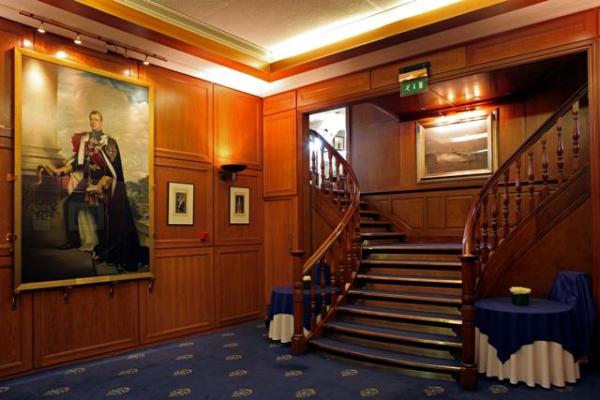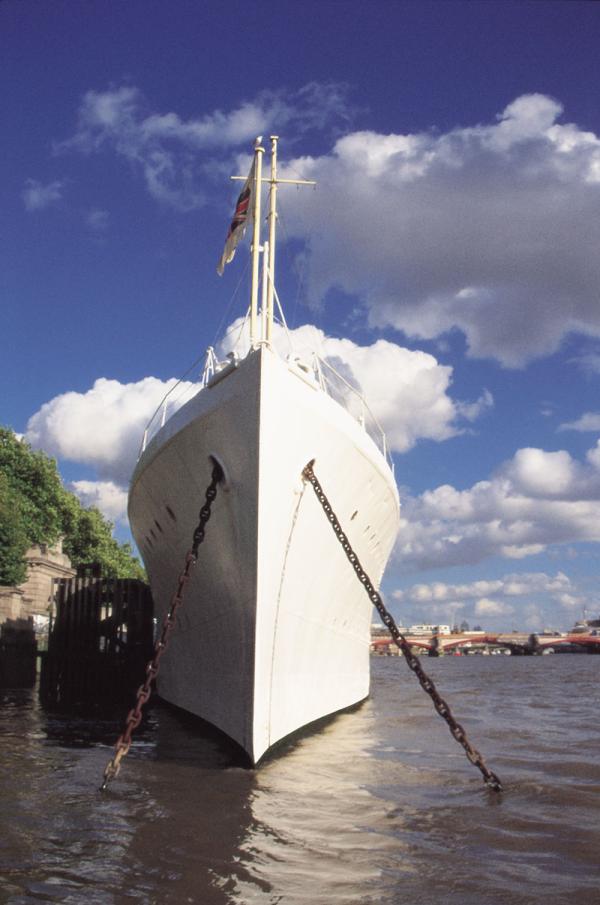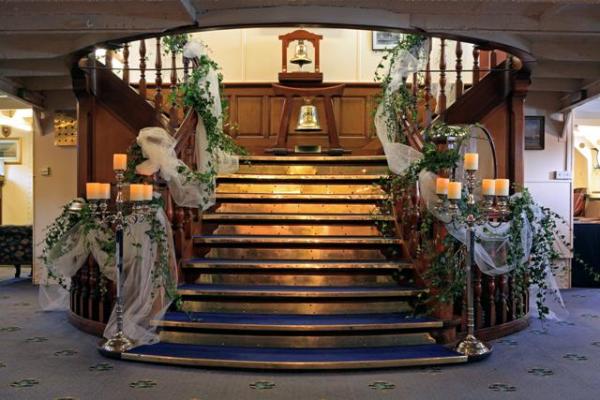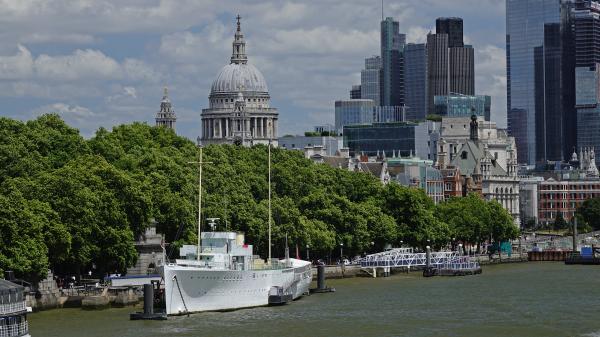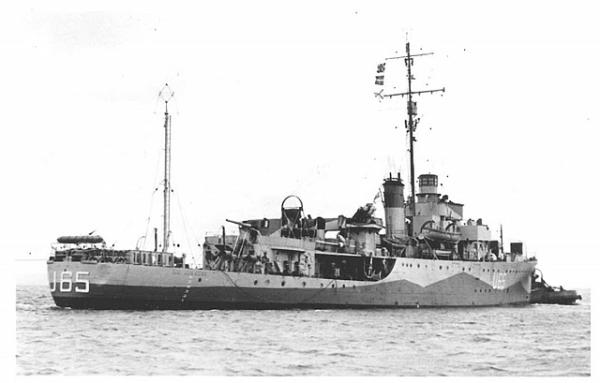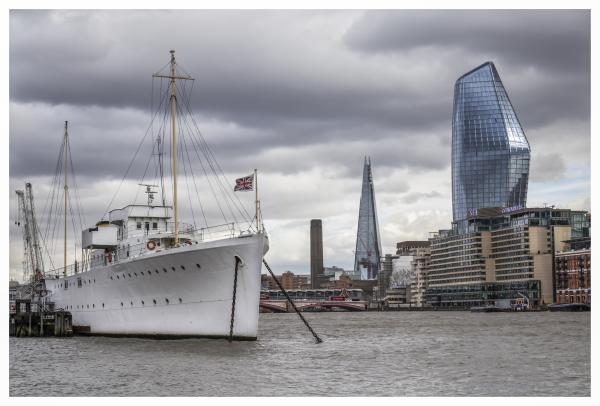

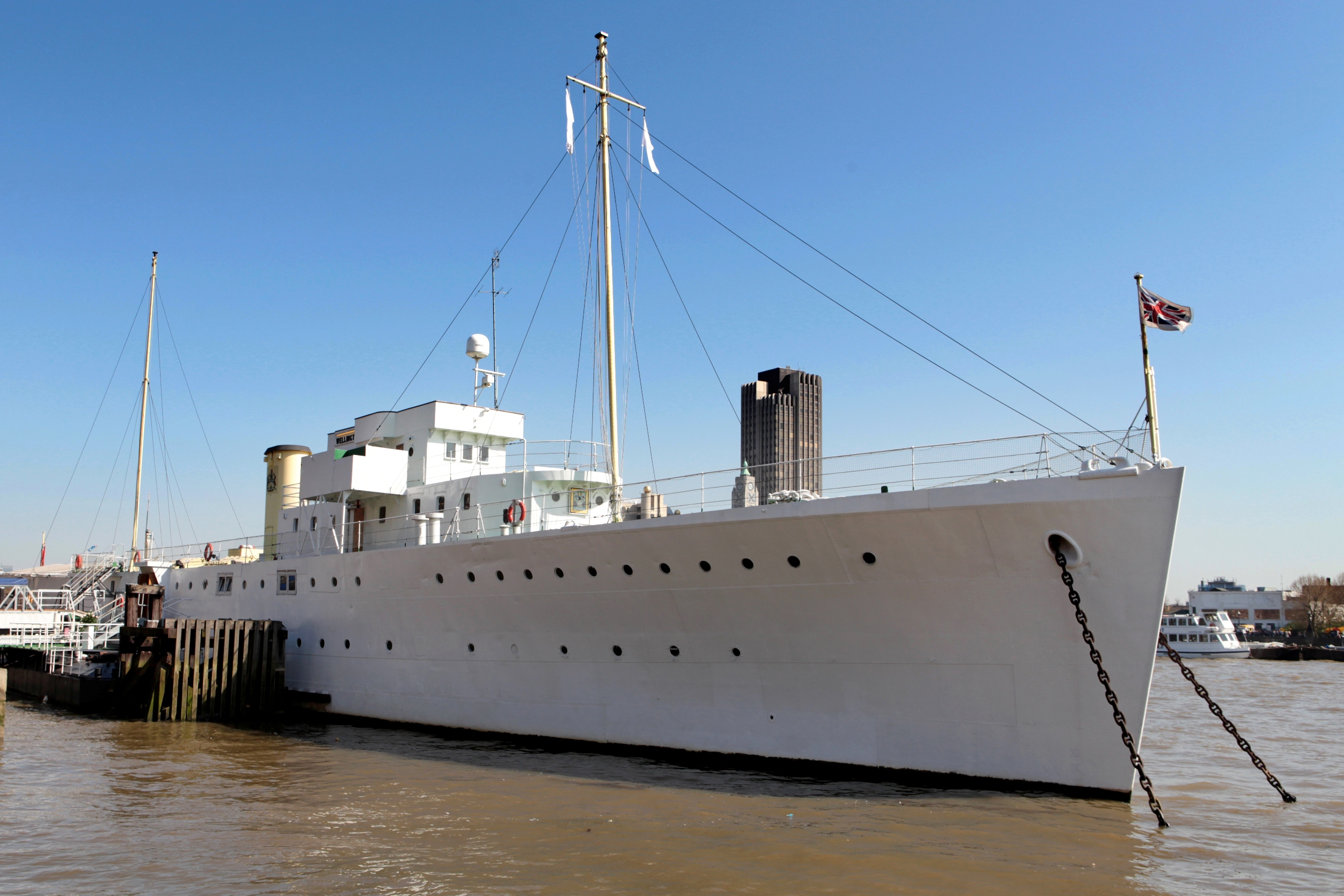
Previous names
- 1934 - 1947 HMS Wellington
- 1947 - 2024 HQS Wellington
- 2024 HMS WELLINGTON (1934)
Details
Construction
Dimensions
History
Launched at Devonport Dockyard, Plymouth on 29 May 1934, HMS WELLINGTON (1934) was the fourth of the seven strong Grimsby Class of Sloops built between 1933 and 1936. She was fitted with two single gun mountings 4.7 inch and one three-inch Anti-Aircraft gun and “fast” Mine-Sweeping gear on the Quarterdeck. Even before completion, the ship was allocated to the Royal Navy Far East Fleet, New Zealand Division and to be based in Devonport Naval Base, Auckland, North Island. The intention was that she would be the nucleus of an emerging Royal New Zealand Navy and would transfer in time to that Service. Hence unlike her Sister Ships who were all named after UK fishing ports, uniquely, WELLINGTON was named after the Capital City of the Nation she would be serving. She arrived on Station in 1935 and patrolled New Zealand waters, and a quarter of a million square miles of the Western Pacific, showing the flag, regularly visiting and policing the many UK Island Protectorates of that region. This came to an end in 1939 with the impending outbreak of war in Europe and WELLINGTON was first detached to patrol China Sea Waters and eventually recovered back to UK.
There she changed her white and buff Far East Fleet livery for two tone grey Atlantic camouflage and additional anti-aircraft guns were fitted for self-defence detection and radar equipments followed. Depth Charge Throwers for which she could carry up to 90 Charges for use against submarines replaced the Sweep Gear on the Quarterdeck and WELLINGTON was transformed into one of the very first Atlantic Merchant Ship Convoy Close Escorts. From 12th December 1939, the ship steamed 240,000 miles escorting over 95 convoys, helping to keep Britain fed, fuelled and fighting. In doing so the ship rescued over 400 survivors from the sea and shared in the destruction of a German U-Boat. Immediately after Dunkirk in June 1940, she also saw action in Operation CYCLE, the failed evacuation of elements of the 51st High Brigade from St Valery en Caux, and in Operation TORCH, the Allied landings in North Africa in November 1942. In 1943 she became one of the first Escorts to be fitted with Hedgehog, an Anti-Submarine ahead throwing device which launched 14 explosive projectiles 500 yards in a deadly pattern – this was installed in place of the 3-inch gun on B gun deck and proved to be a war-winning weapon in the Atlantic campaign.
She served in the Atlantic throughout WWII, one of only 12 warships continuously engaged in the Battle of the Atlantic and earning her the Battle Honour “Atlantic 1939-1945”. Begun on 3rd September 1939, the first day of the War, the Battle of the Atlantic’s 5 years, 8 months and 4 days were described by Churchill as ‘… the dominating factor all through the War. Never for one moment could we forget that everything happening elsewhere, on land, at sea or in the air depended ultimately on its outcome and amid all other cares we viewed its changing fortunes day by day with hope or apprehension. ‘ On 8th May 1945, VE-Day, HMS WELLINGTON completed her final convoy escort duty in the Second World War’s longest campaign. Accompanied by three Royal Navy Corvettes she escorted convoy MKS099G homewards from Gibraltar on 5th May 1945 towards Britain from West Africa. The 29 Merchant Navy ships arrived safely on 12th May. She then Paid-Off from Naval Service and steamed to Milford Haven, mooring on the mudbanks of the Pennar River “Gut” to await final disposal. HQS Wellington is Britain’s only surviving warship from the Battle of the Atlantic.
It had always been the ambition of the founding members of the Honourable Company Master Mariners, the professional body for Sea Captains of the Merchant and Royal Navies and a City of London Livery Company to have a Livery Hall as other such Companies. Up to the outbreak of war in 1939, various proposals were examined, including the purchase of the three-masted sailing ship, the Archibald Russell. After the war, it became apparent that the possibility of building a Hall in the City of London had been rendered very remote. However, in 1947, WELLINGTON was made available by the Admiralty and the Company decided to buy her and to produce a “floating” Livery Hall – a wholly appropriate home for a Company of seafarers.
She was then converted from being His Majesty’s Ship WELLINGTON to Head Quarters Ship WELLINGTON at Chatham Dockyard. The cost of this conversion, which included the installation of a grand wooden staircase taken from the former Isle of Man Ferry, SS VIPER, was met by an appeal to which Lloyd’s, Shipping Companies, Livery Companies and many other benefactors generously contributed. She arrived at her Temple Stairs, Victoria Embankment berth in December 1948 to continue service as the floating Livery Hall, offices and home of the Honourable Company of Master Mariners.
In 1991 HQS WELLINGTON was dry-docked at Sheerness for three months during which, apart from extensive steelwork repairs and complete external painting, she received a major refurbishment which included the refitting of all toilet facilities, offices and accommodation areas. For the first time, WELLINGTON was fully fitted with custom-made carpets, which added a feeling of comfort and warmth to the ship. This, coupled with imaginative displays of the Company’s marine paintings and artefacts, gold and silver plate, ship models and newly discovered very early 18th century charts, helped make the ship a Livery Hall which is admired throughout the City of London. In 2003 WELLINGTON gained a World Ship Trust Special Award for her preservation.
On the 1st of July 2005 ownership of the WELLINGTON was transferred from the Honourable Company to the WELLINGTON Trust. This charitable Trust was established to ensure the preservation of this historic ship and by utilising the many artefacts and documents onboard WELLINGTON, to further educate the public on the rich history of the British and Commonwealth Merchant Navies and the value of seaborne trade and commerce to the United Kingdom. Annual exhibitions on specific maritime events and anniversaries are provided onboard in conjunction with tailored school Learning Programmes at Primary, Secondary and Sixth Form levels.
WELLINGTON also serves as the London Offices of the International Pilots Association (IMPA), the Maritime Foundation and the Flag Institute.
In September 2024 HRH King Charles III officially approved the change of name to HMS WELLINGTON (1934).
In January 2025, The Wellington Trust was awarded a £225,000 National Lottery Heritage Fund grant towards various projects including: Access to the public; Community Engagement; Business development; Conservation and Preservation; and Education and Learning.
From May 2025, HMS WELLINGTON can now be booked for overnight stays in the Captain's Cabin.
Key dates
-
1934
Vessel built by Devonport Dockyard for the Royal Navy
-
193-1939
Patrolled New Zealand and Western Pacific Waters
-
1939-1945
World War II service as a Merchant Navy Convoy Close Escort in the Battle of the Atlantic
-
1947
Converted to a floating Headquarters, Offices and Livery Hall for the Honourable Company of Master Mariners based on the Thames Embankment, London
-
1991
Major Docking and Refit carried out
-
2005
Refit carried out
Grants
-
2025
Awarded £225,000 by the National Lottery Heritage Fund to secure her future
-
October 2020
The Wellington Trust received a grant of £213,300 from round 1 of the Culture Recovery Fund.
-
2013/14
The Heritage Lottery Fund awarded £80,800 for exhibition on board
Sources
Brouwer, Norman J, International Register of Historic Ships, Anthony Nelson, pp182, Edition 2, 1993
Sullivan, Dick, Old Ships, Boats and Maritime Museums, Coracle Books, 1978
Colledge, J. J.; Warlow, Ben (2006) [1969]. Ships of the Royal Navy: The Complete Record of all Fighting Ships of the Royal Navy (Rev. ed.). London: Chatham Publishing. ISBN 978-1-86176-281-8.
Hague, Arnold (1993). Sloops: A History of the 71 Sloops Built in Britain and Australia for the British, Australian and Indian Navies 1926–1946. Kendal, England: World Ship Society. ISBN 0-905617-67-3.
Captain Munro A.D (1 January 2006). HMS/HQS Wellington. Wellington Trust. ISBN 978-0-9553405-0-5.
Tramp to Queen autobiography by Capt. John Treasure Jones, The History Press (2008) ISBN 978 0 7524 4625
.
Leading Seaman Williams GJ, HMS Wellington-One Ship’s War
Own this vessel?
If you are the owner of this vessel and would like to provide more details or updated information, please contact info@nationalhistoricships.org.uk

